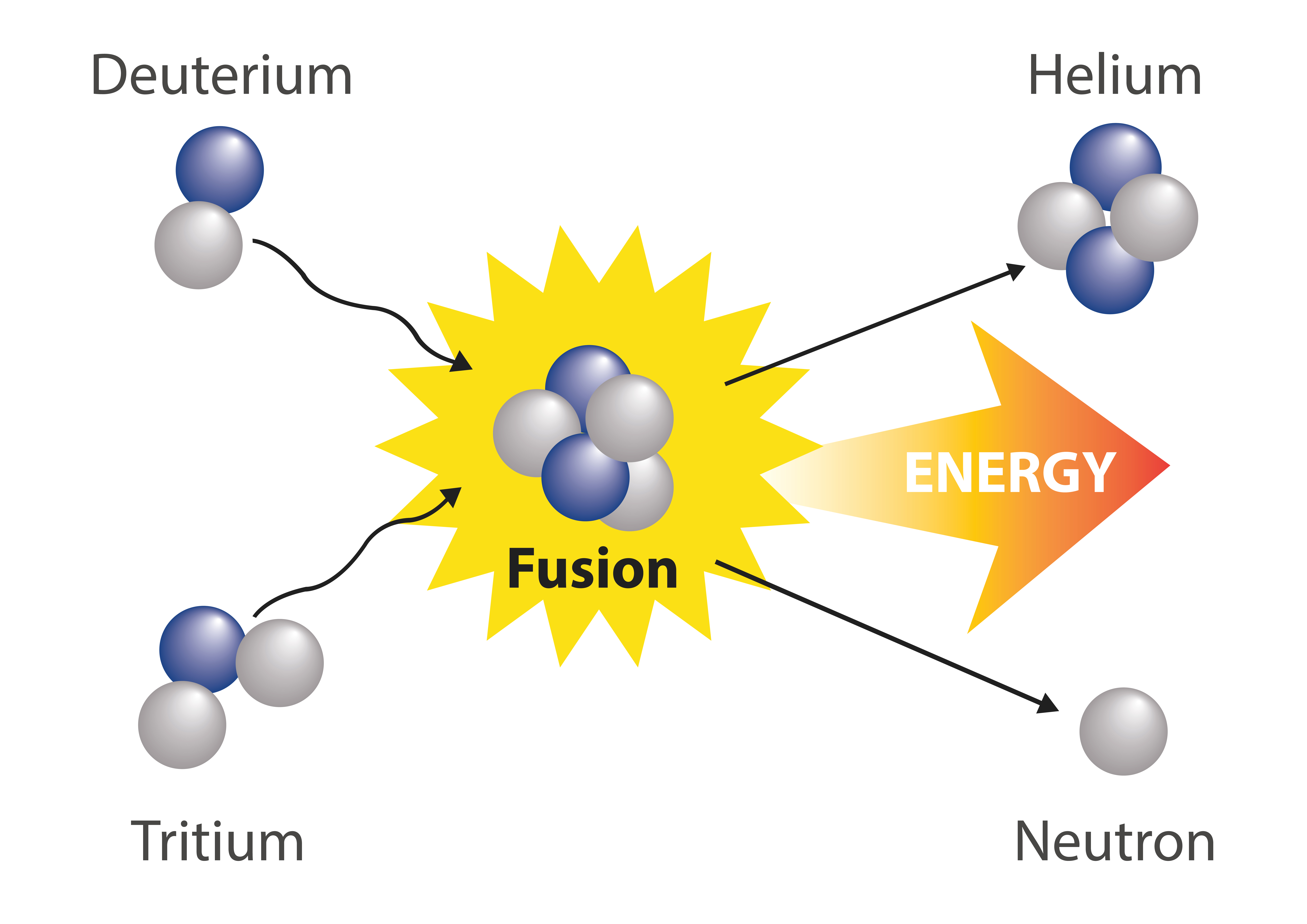Ongoing efforts in nuclear fusion research promise a cheap, clean, and safe energy source for future generations. In this blog post, we’re looking at how fusion power works, its advantages, and how fusion research is bringing us closer to commercial fusion reactors.
What is nuclear fusion?
Nuclear fusion is a type of reaction that occurs between the nuclei of atoms. When two atomic nuclei are brought sufficiently close together, they will “fuse” to form a single larger nucleus. Importantly, when relatively small nuclei such as hydrogen and helium undergo fusion, the reaction releases energy.
Nuclear fusion between hydrogen and helium is how our Sun generates all of its energy. In this sense, nuclear fusion is already the Earth’s primary power source, as it is the source of all chemical energy and incident solar energy on the planet.
Fusion research seeks to reproduce nuclear fusion on Earth, in theory providing us with abundant, clean and low-cost energy. Unfortunately, this process is far from simple – the primary challenge of fusion research is that atomic nuclei will only fuse if they’re pushed together with sufficient force to overcome their electrostatic repulsion from each other. In the core of The Sun, this is no problem: fusion occurs readily here due to the gravitational pressure of around 2×10^30k kg of hydrogen. Fusion research on Earth, however, must rely on other means to squeeze nuclei together with enough force for them to fuse. Fusion research on Earth, however, must rely on other means to squeeze nuclei together with enough force for them to fuse.
Why is fusion research important?
Most approaches in fusion research focus on the fusion of two different isotopes of hydrogen known as deuterium and tritium. While ordinary hydrogen has just one proton in its nucleus, deuterium and tritium have additional neutrons. Fusing deuterium and tritium to form helium can be done at relatively low temperatures and is much more energetically favourable than other fusion reactions.1

In addition to producing large amounts of energy, deuterium and tritium are abundant fuels: deuterium can be distilled from ordinary seawater. In contrast, tritium can be produced or “bred” during fusion reactions when high-energy neutrons collide with lithium in the reactor walls (lithium is a readily available resource on Earth).
Fusion research promises a power source that uses small amounts of readily available fuel and produces virtually zero carbon emissions. Unlike existing renewables, which tend to be weather-dependent, a commercial fusion reaction would be able to provide energy on demand. Unlike existing nuclear power stations (which rely on nuclear fission rather than fusion), a fusion plant would produce no long-lived radioactive waste, present no risk of meltdown, and limited proliferation risk.
Approaches to fusion research
The goal of fusion research is essentially to reproduce the conditions found at the core of The Sun on Earth. The leading approach in fusion research is to achieve this using magnetic confinement: tritium and deuterium plasma can be contained within a doughnut-shaped (toroidal) magnetic field and fused at high temperatures.
This approach has been validated in fusion research reactors – in particular at the Joint European Torus (JET) in Culham, England. Scientists at JET achieved a major fusion research milestone earlier this year by sustaining a plasma for 5 seconds – practically an eternity on nuclear timescales.2
All fusion research experiments have so far consumed more energy than they produce. The next goal for fusion research is to build a larger and upgraded version of the JET reactor capable of net output. This new research reactor – called ITER – will use giant superconducting magnets to confine the plasma.3 Construction of this unique fusion research reactor is already underway and is scheduled to start running its first experiments in 2025.4
Hiden Analytical has developed a line of specialized quadrupole mass spectrometers for isotope analysis in fusion research, including the DLS range of quadrupole mass spectrometers for study and the HAL 101X RGA for monitoring, diagnostics and analysis applications at the tokamak.
To find out more about our mass spectrometer solutions for fusion research, view our fusion research product brochure here or get in touch with a member of our team today.

